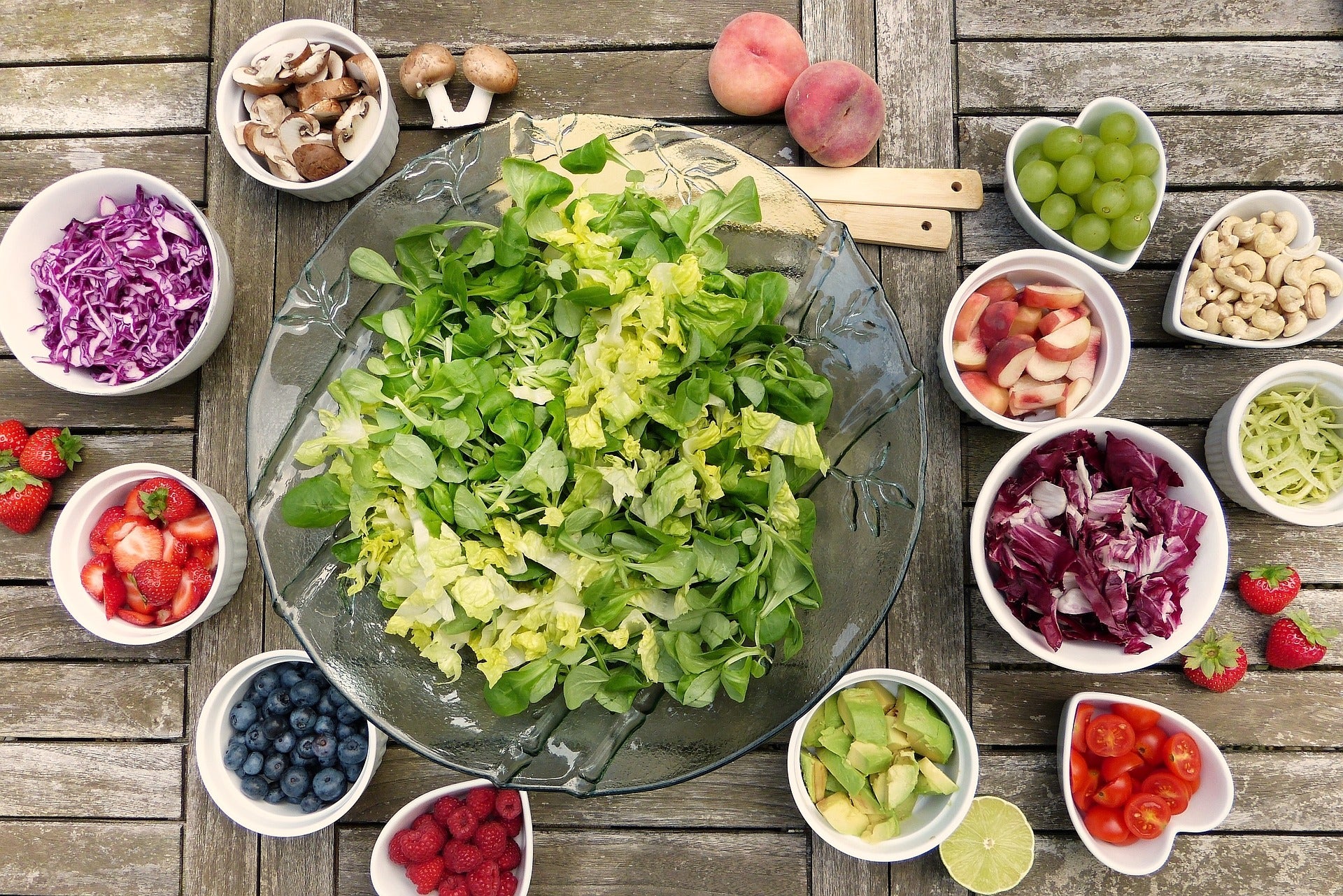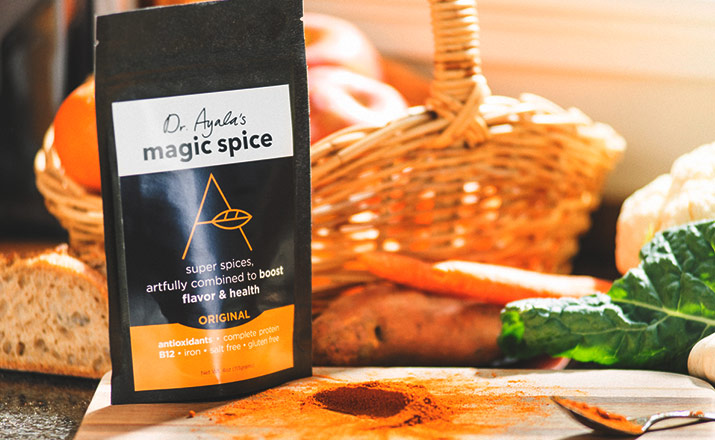
An Easy, Proven Trick for Eating Healthier

What’s the perfect diet? We’ll probably never agree on that, nor is it likely that there’s just one optimal eating pattern, or that it fits everybody.
But there’s little doubt about this: A shift towards eating more plants and less meat will benefit your personal health and is more sustainable for the planet.
The Western diet – high in animal protein and low in plant-based food – is linked with chronic diseases: obesity, type 2 diabetes, heart disease and cancer. Feeding plant crops directly to people is far more efficient, and the meat industry is a major contributor to greenhouse gasses, land deforestation, water contamination and environmental degradation.
Although interest in plant-based diets is rising, few people actually choose to adopt a vegetarian diet – only 5 percent of Americans avoid meat altogether. But if more people would shift a little towards plants and little away from meat it could make a big difference for both public health and preserving our environment.
One way to replace meat with plant-based protein is the booming market of plant based meat substitutes. Companies like Beyond Meat make products that imitate meat’s flavor and texture.
Another option is to simply replace part of the meat with legumes and vegetables in their original state. Dishes and recipes that combine meat with other ingredients are common to many cuisines, and shifting the proportions of meat to veggies might be a practical way to achieve this goal.
A new study in the journal Appetite tested students’ reception of lower-meat, more-plant dishes in a college setting. The research, led by Molly Spencer, included 150 California students.
Taking away two thirds of the meat
The students were tested three separate times, and were served three different burrito bowls, while not knowing which sample they were eating. The “control” burrito bowl had 60 percent meat (beef), 20 percent legumes, and 20 percent veggies, and was accompanied with mild salsa and layered on a bed of flour tortillas. The test bowls both had lower meat: 20 percent meat, 40 percent legumes, and 40 percent veggies. One of the lower meat bowls had mild salsa, and the other one had spicy salsa, and both were served with the same flour tortillas as the control. Both low meat bowls had a healthier nutrition profile: fewer calories, less salt and saturated fat, more fiber, potassium and vitamin C. The researchers studied student’s acceptance and opinion of the three dishes.
And the results: The students liked all three versions. The low meat bowls were just as appealing in texture and flavor, and just as satiating and filling. The students said they were equally likely to select any of the three preparations.
Interestingly, there were more complaints of “too much” about the legumes (beans) than the veggies in the lower meat dishes, and similarly, in the high meat dish, more people complained about “too little” of the veggies, rather than the beans. Veggies were more popular than beans, and this isn’t the first study to show that.
And what about spiciness? The spicier dish was perceived as a little saltier, a little more complex.
Shifting towards plant foods
Many healthy cuisines are plant-rich without avoiding animal products. The typical Mediterranean diet contains meat, but the meat is more of a flavoring, a condiment, than the majority presence on the plate. The Mediterranean traditional eating pattern is characterized by high consumption of fruit, vegetables, herbs, spices, legumes and complex carbs, moderate consumption of fish, and low consumption of meat and full fat dairy.
Likewise, the current Dietary Recommendations for American’s visualize in My Plate a dish half full with fruits and veggies. My Plate’s protein, which includes protein from all sources, including meat, poultry, eggs pulses, beans, nuts, seeds etc. represents just about a quarter of that plate.
This new study concludes that “a shift from meat-centric dishes to plant-forward dishes without the strictness of vegetarianism or veganism, is feasible,” and I think that places like schools, college cafeterias and health care facilities might be the great place to introduce people to this easy, gradual shift.
As would be the family meal.
The addition of spiciness in the study design is aimed to increase the healthy dish's appeal, and that, too, is a tool that should be tried widely.
Dr. Ayala
In Same Category
- Diet affects vulnerability to Covid-19
- To Fight Inflammation Try Your Spice Rack
- Make Vegetables Sexy
- It Isn’t Meat, but Is It Delivering on Plant-Based?
- Activating Brown Fat – and Your Metabolism – with Turmeric, Coffee and Other Goodies
- Here's Why You Need to Cook More
- Top Healthy Food Trends for 2019
- An Easy, Proven Trick for Eating Healthier
- 12 Delicious Cooking Tips That Will Set You Free From The Salt Trap
- Smart Eating for a Successful School Year
- Fitness, Mindfulness and Healthy Eating – There’s an App for That
- Sustainable Summer: Greening your BBQ
- How to Eat Healthy in College and Avoid Weight Gain on Cafeteria Food
- Want Kids to Eat More Veggies? Season Them Up!
- All You Ever Wanted to Know About Nutritional Yeast and Its Health Benefits
- Falling in Love with Kickstarter
- Fighting Inflammation with Spices
- 3 Things Plant-Based Eaters Should Watch For
- Turmeric Absorption and Tips to Enhance Its Activity
- BEFORE & AFTER: Roasted Sweet Potatoes
- BEFORE & AFTER: Baked Potato Wedges
- BEFORE & AFTER: Roasted Cauliflower
Related by Tags
- It Isn’t Meat, but Is It Delivering on Plant-Based?
- Here's Why You Need to Cook More
- Top Healthy Food Trends for 2019
- An Easy, Proven Trick for Eating Healthier
- Fitness, Mindfulness and Healthy Eating – There’s an App for That
- Sustainable Summer: Greening your BBQ
- How to Eat Healthy in College and Avoid Weight Gain on Cafeteria Food
- Want Kids to Eat More Veggies? Season Them Up!
- 3 Things Plant-Based Eaters Should Watch For
- BEFORE & AFTER: Roasted Sweet Potatoes
- BEFORE & AFTER: Baked Potato Wedges
- BEFORE & AFTER: Roasted Cauliflower
